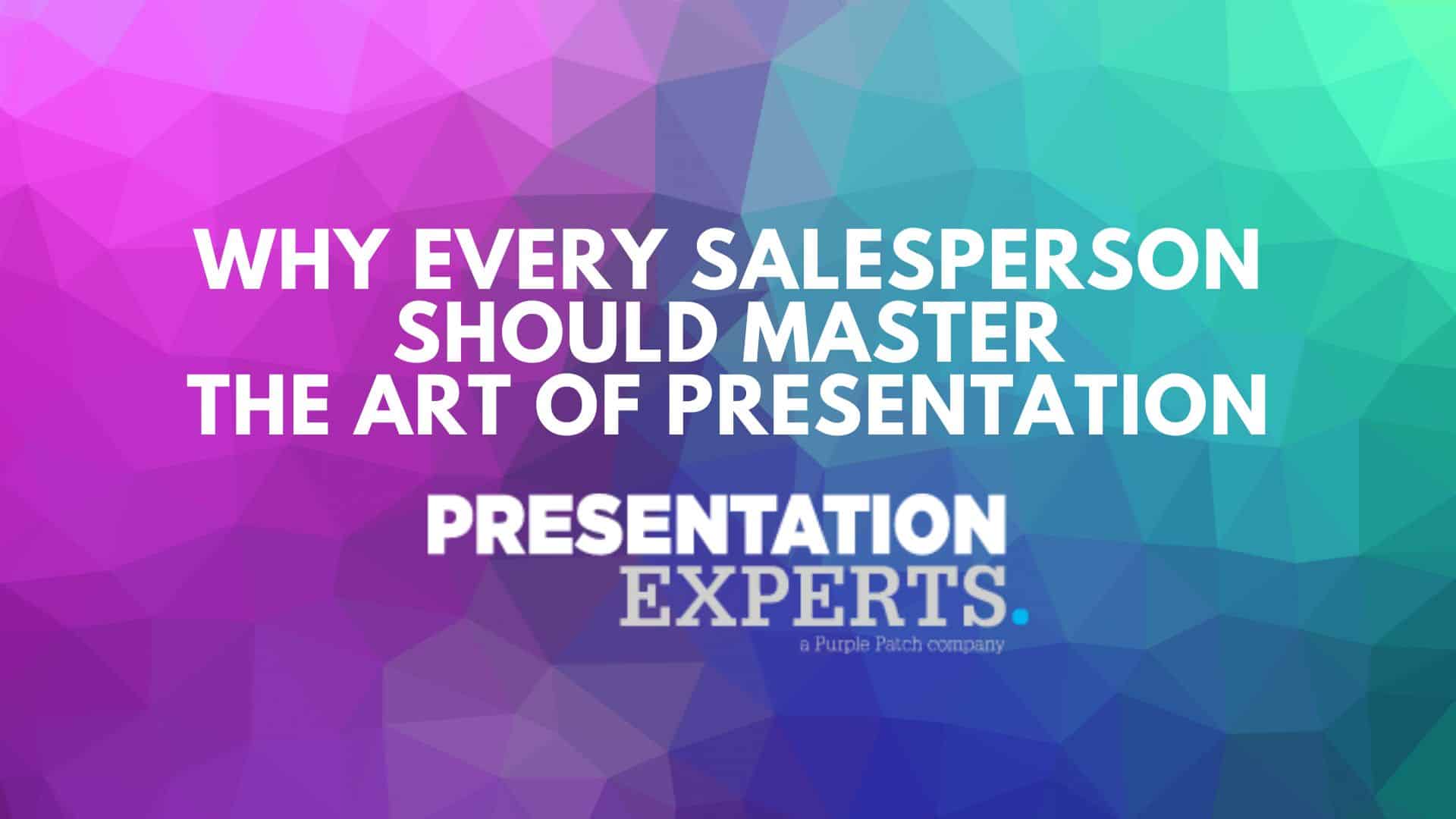

At its core, the success of any business hinges on its ability to sell effectively. Sales generate the revenue necessary for everything from hiring talented employees to expanding into new markets. However, successful selling is not merely about offering a product or service; it’s about how you present that offering to potential customers.
In the digital age, where information is abundant and consumer choices are plentiful, the art of selling has had to evolve significantly. In the not-so-distant past, a salesperson’s job was primarily about pitching products or services and highlighting their features. However, in recent times, sales presentations have emerged as one of the most potent tools in a salesperson’s arsenal. This is why mastering the art of presentation and pitch deck design has become more critical than ever before. It’s no longer optional but an absolute necessity.
In this article, we explore the pivotal role that sales presentations play in supporting business growth and why every salesperson should invest time and effort into perfecting the art of presentation. But before we dive in, let’s understand how the dynamics of sales have changed in recent times to better understand the true purpose of a sales presentation.
The Changing Face of Sales
Not so long back, salespeople relied heavily on in-person meetings, cold calls, and printed brochures to convey their offerings to potential customers. However, the digital age has ushered in a profound transformation in the way businesses operate and sell. Here are some ways the dynamics of sales have changed in recent times:
The Digital Revolution: The advent of the internet has empowered consumers with unprecedented access to information. Before engaging with a salesperson, modern buyers often conduct extensive research online, comparing products, reading reviews, and seeking recommendations from their networks. This shift in the information landscape has fundamentally altered the sales dynamic.
Consumer Empowerment: With a wealth of information at their fingertips, consumers are now more discerning and cautious than ever before. They expect a seamless, value-driven experience when interacting with businesses. This means that traditional, pushy sales tactics are increasingly ineffective and even counterproductive.
Adapting to the Modern Consumer: In this digital era, sales must adapt to the preferences and behaviours of the modern consumer. The sales process has become more customer-centric, emphasising the need to build relationships, provide value, and address specific needs. It’s no longer enough to present a product’s features; businesses must convey how their solutions solve real-world problems
Now that we have a better idea of how things have changed in the world of sales, let’s understand what a sales presentation is and what’s expected from such a presentation.
What is a Sales Presentation?
A sales presentation is a structured and persuasive communication delivered by a salesperson or a representative of a company to a potential customer or client. Its primary purpose is to showcase a product, service, or solution and persuade the prospect to make a purchase or take a specific action, such as scheduling a follow-up meeting or requesting more information.
Sales presentations are typically used in business-to-business (B2B) and business-to-consumer (B2C) sales processes and can take various forms, including in-person meetings, virtual presentations, webinars, or even written proposals.
Key elements of a sales presentation often include:
Introduction: Establishing rapport and credibility with the prospect.
Problem Identification: Identifying the prospect’s pain points or challenges.
Solution Presentation: Presenting the product or service as a solution to the identified problems.
Value Proposition: Highlighting the unique value and benefits of the offering.
Visual Aids: Using visuals, slides, or demonstrations to enhance understanding.
Objection Handling: Addressing potential objections or concerns.
Call to Action (CTA): Encouraging the prospect to take a specific action, such as making a purchase or scheduling a follow-up.
Sales presentations aim to provide information, build trust, and ultimately convince the prospect to take the desired action, contributing to the sales process and the growth of the business.
Now that we know what a sales presentation is, let’s understand why it is essential for modern businesses and why you should master it.
Why Should You Master the Art of Sales Presentation?
#1: Setting the Foundation of Sales Success
Sales presentations provide the structure, context, and persuasive power needed to turn leads into clients. Research shows that well-structured and compelling presentations can increase conversion rates significantly. Whether you’re in a B2B or B2C space, your ability to convey value and persuade potential clients through presentations can make or break your business.
Effective sales presentations not only inform but also inspire. They ignite a spark of interest, overcome objections, and create the desire to take action. In essence, they are the catalyst for business growth.
#2: Expanding Customer Relationships
In the world of sales, a one-time transaction is good, but a long-term customer relationship is gold. Sales presentations are not just tools for closing deals; they are invaluable for nurturing and expanding these relationships.
Think of it this way: once you’ve successfully converted a prospect into a customer, your presentation skills don’t retire; they pivot. Sales presentations become powerful instruments for upselling and cross-selling. You already have the client’s attention and trust, making it the perfect time to introduce complementary products or services that meet their needs.
Moreover, through well-structured presentations, you can continually provide value to your customers. You can educate them about new offerings, share industry insights, and offer solutions to evolving challenges. This ongoing engagement not only strengthens the client’s loyalty but also turns them into advocates who recommend your business to others.
As you master the art of sales presentations, you’ll find that they are not just transactional tools but relationship-building instruments that lay the foundation for sustainable business growth.
#3: Accelerating Sales Funnel Progressio
The sales funnel is the journey that a potential customer takes from initial awareness (about the product or business) to final purchase. Sales presentations are instrumental at every stage of this journey, accelerating progression and increasing the likelihood of conversions. Here’s how they can be used to accelerate sales funnel progression:
Awareness Stage: In the early stages, presentations help create awareness and pique interest. They help introduce your product or service to a cold audience. An engaging presentation can turn casual interest into a genuine desire to learn more
Consideration Stage: As prospects move through the funnel, they seek more information. This is where presentations play a crucial role in providing in-depth insights, addressing questions, and alleviating concerns. They serve as educational tools that guide potential customers toward a decision
Decision Stage: At the bottom of the funnel, presentations become deal closers. They allow you to make a compelling case for why your offering is the best choice. Your presentation can be the final nudge that convinces prospects to take action and make a purchase.
Furthermore, sales presentations help overcome objections and concerns that naturally arise during the sales process. By proactively addressing these issues with well-crafted presentations, you smooth the path to conversion and enhance the efficiency of your sales funnel
In essence, sales presentations serve as navigational guides for customers as they move through the sales funnel, ensuring a smoother and more efficient journey towards business growth.
#4: Leveraging The Power of Persuasio
When you attend a well-structured, engaging sales presentation, you are more likely to be swayed by the presenter’s arguments and ideas. A compelling narrative, supported by well-designed visuals and a convincing delivery, can influence your buying decisions profoundly
Effective sales presentations leverage the principles of persuasion to their advantage. They tap into the emotional and logical aspects of decision-making, creating a powerful cocktail that makes customers more receptive to your message. Whether it’s storytelling to establish an emotional connection, providing data to support your claims, or addressing pain points and needs directly, a well-executed sales presentation can work wonders in convincing potential clients to say “yes.”
Consider, for instance, the persuasive power of Steve Jobs during his iconic Apple product launches. His presentations weren’t just about product features; they were about creating an emotional connection with the audience, making them believe that owning an Apple product would transform their lives.
The takeaway is clear: sales presentations are not just about disseminating information; they are about winning hearts and minds, a fundamental component of the sales process that cannot be underestimated
#5: Building Trust and Credibility
Trust is the cornerstone of any successful business relationship, and in sales, it’s of paramount importance. Customers want to know that they’re making the right decision when they invest in your product or service. Building trust is not a one-time event; it’s a continuous process, and sales presentations play a pivotal role in this journey.
When you deliver a well-prepared sales presentation, you signal to your audience that you are knowledgeable, prepared, and invested in their needs. This professionalism and dedication go a long way in establishing trust and credibility.
A comprehensive sales presentation can also address potential doubts and concerns that customers may have. It’s an opportunity to proactively tackle objections, highlight your company’s track record, and provide evidence that your offering can deliver on its promises. This transparency and willingness to address concerns head-on instil confidence in your potential clients.
Moreover, a well-crafted presentation demonstrates that you respect your client’s time and attention. It shows that you’ve put in the effort to create a tailored, valuable experience for them. In a world where attention is a scarce resource, this consideration is invaluable in building trust.
#6: Educating the Audience About Your Offer
Sales presentations are not just about selling; they are about educating your audience as well. Effective sales presentations go beyond showcasing the features of your product or service. They provide a platform for offering in-depth understanding to your audience. When you present, you have the opportunity to explain not just what your offering does, but also why it matters and how it can benefit your audience.
When you invest in improving your presentation skills, you become a source of knowledge and insight, and that sets you apart in a crowded marketplace. You can dive into the intricacies, share insights, and provide context that helps your clients see the real value in what you’re offering.
This allows you to answer complex questions, address specific needs, and tailor your pitch to match the client’s requirements precisely. Clients appreciate this level of expertise, and it builds their confidence in your ability to meet their needs.
How to Deliver Effective Sales Presentation
Now that you’ve recognised the immense value of mastering the art of presentation, it’s time to take action. Here are some steps to get started:
Invest in Training: Consider enrolling in presentation skills training programs or workshops. These can provide valuable insights and practice opportunities.
Practice Regularly: Practice makes perfect. Set aside time to refine your presentation skills, and seek feedback from colleagues and mentors
Leverage Technology: Explore presentation software and tools that can enhance your presentations, making them more engaging and interactive. Complete presentation creation is now easier than ever, thanks to these software.
Stay Informed: Keep up with industry trends and innovations in sales presentations. Technology and customer preferences evolve, so your skills should too.
Network and Learn: Connect with fellow sales professionals and learn from their experiences. Share best practices and insights to continually improve.
Seek Feedback: After each presentation, gather feedback from your audience to identify areas for improvement.
Remember, the journey to presentation mastery is ongoing. By embracing this path, you’ll not only unlock success in sales but also open doors to personal and professional growth. Your presentation skills are the keys to achieving your sales goals and making a lasting impact on your clients.
Final Thoughts
As you’ve discovered in this article, it’s not merely about delivering a pitch; it’s about creating a compelling narrative, establishing credibility, and forging lasting connections. This translates into higher conversion rates, increased revenue, and more satisfied customers. By investing in your presentation skills, you’re not just investing in your career; you’re investing in your success.
If you’re serious about taking your sales presentations to the next level, look no further. At Presentation Experts, we’re not just pioneers; we’re leaders in the realm of presentation design and training in the UK. Our proven expertise has helped countless professionals like you unlock the full potential of their presentations. Whether you want to craft persuasive sales presentations or enhance your presentation skills, our team of presentation experts can help. Contact us today to learn more.








